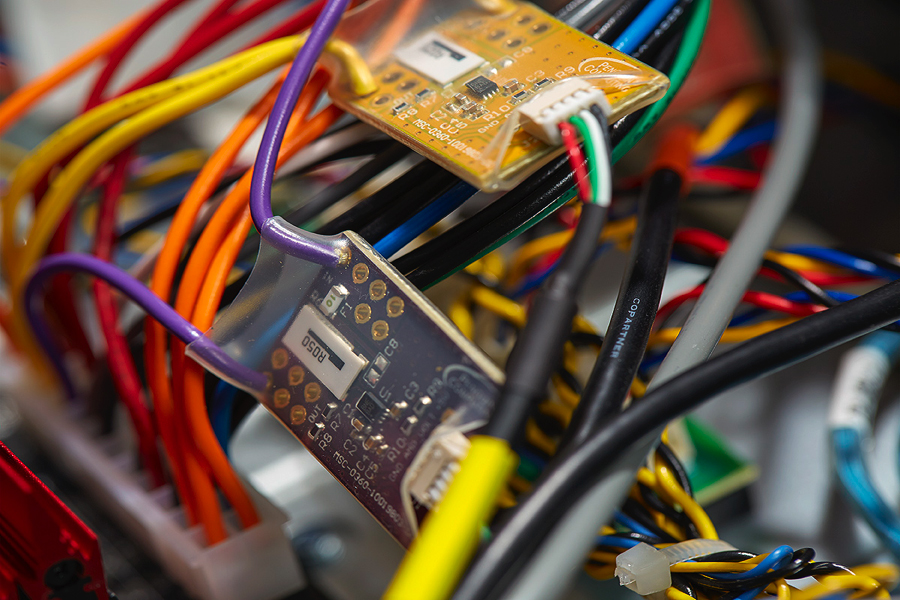Advanced Computing, Mathematics and Data
Research Highlights
October 2015
CENATE: A Computing Proving Ground
New center at PNNL will shape future extreme-scale computing systems
High-performance computing systems at the embedded or extreme scales are a union of technologies and hardware subsystems, including memories, networks, processing elements, and inputs/outputs, with system software that ensure smooth interaction among components and provide a user environment to make the system productive. The recently launched Center for Advanced Technology Evaluation, dubbed CENATE, at Pacific Northwest National Laboratory is a first-of-its-kind computing proving ground. Before setting the next-generation, extreme-scale supercomputers to work solving some of the nation’s biggest problems, CENATE’s evaluation of early technologies to predict their overall potential and guide their designs will help hone future technology, systems, and applications before these high-cost machines make it to production. Funding for CENATE at PNNL is being provided by the U.S. Department of Energy’s Office of Advanced Scientific Computing Research.

PNNL’s Seapearl compute cluster can closely monitor and measure power and temperature in high-performance computing systems. Enlarge Image.
Modern computing systems are increasingly complex, incorporating a multitude of leading-edge technologies and nonlinear interactions. This complexity has led to a growing and continuous need to employ advanced methods to reassess; prototype; measure; and anticipate, using performance and power modeling and simulation, the life cycle of new technologies, as well as the co-design of new computing systems and applications.
CENATE uses a multitude of “tools of the trade,” depending on the maturity of the technology under investigation. The scientists in CENATE will conduct research in a complex measurement laboratory setting that allows for measuring performance, power, reliability, and thermal effects. When actual hardware is not available for technologies early in their life cycle, modeling and simulation techniques for power, performance, and thermal modeling will be used. Through its Performance and Architecture Laboratory (PAL)—a key technical capability of the Laboratory—PNNL can offer a unique modeling environment for high-performance computing systems and applications. In a near-turnkey way, CENATE will evaluate both complete system solutions and individual subsystem component technologies, from pre-production boards and technologies to full nodes and systems that pave the way to larger-scale production. CENATE will focus on technology evaluations in the context of workloads of interest to DOE’s Office of Science and build on instrumentation and expertise already gleaned from other programs and PNNL institutional investments.
CENATE stands apart because its overarching goal is to take these advanced technology evaluations out of isolation. CENATE will provide the central point for these once-fragmented investigations, incorporating a user facility type of model where other national laboratories and technology providers will have the opportunity to access CENATE resources and share in the integrated evaluation and prediction processes that can benefit computing research.
“A central focus on examining the prediction of potential future extreme-scale high-performance computing systems has been missing from DOE’s HPC research community,” said Adolfy Hoisie, PNNL’s chief scientist for computing and the principal investigator and director of CENATE. “In PAL, we already have applicable resources and experience amid its considerable modeling and simulation of systems and applications portfolio to undertake the empirical evaluations, and we have steadily invested in dedicated infrastructure. CENATE will allow us to bolster our dedicated laboratory with leading-edge testbeds and measurement equipment for rapidly evolving technology evaluations. We also will make the most of our industry connections, adding ‘loaner’ equipment to CENATE’s technology mix as appropriate.”
CENATE evaluations will mostly concern processors; memory; networks; storage; input/output; and the physical aspects of certain systems, such as sizing and thermal effects. All associated system software will be included in the evaluation and analyses, with some investigations emphasizing system software. Multiple types of testbeds will be employed to examine advanced multi-core designs and memory component technologies, as well as smaller-scale technologies with a small number of nodes that can be interconnected using a commodity-type or proprietary network. CENATE’s testbeds also will accommodate larger-scale advanced scalability platforms with hybrid or homogeneous processor technologies and state-of-the-art network infrastructures, as well as disruptive technologies not typically evaluated as physical testbeds, such as Silicon Photonics or quantum computing.
“We’ll strive for CENATE to become the premier destination for technology evaluation, measurement facilities, testbeds, and predictive exploration—driven by transparency and collaboration—that will shape the design and capabilities of future exascale computing systems and beyond,” Hoisie added.
